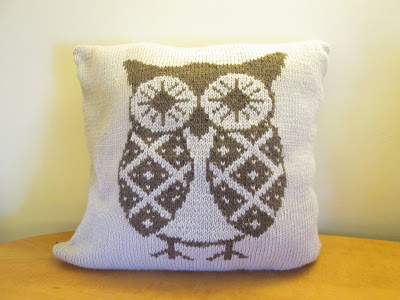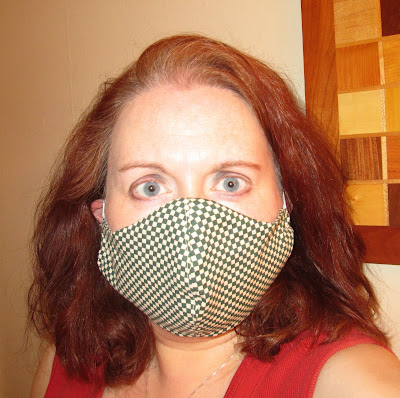I'm embarrassed to say that, although I did practice social distancing religiously from the outset of the COVID19 pandemic, I was a late adopter when it came to mask-wearing. It wasn't until May 24, 2020 that I went, maskless, to Fabricland to buy supplies to make masks, and then when I was waiting in the queue to get in, word came back along the line that Fabricland was requiring masks. I had checked their website before I came, and it had said nothing about masks being required, and there I facing the Catch 22 of having spent the bus fare and an hour getting to the store to buy materials so I could sew masks to wear, only to find I couldn't get in because I didn't already have a mask. There were other maskless people in that line up. We were stymied and disgruntled for a minute or two... but only for a minute or two.
Remember, this wasn't just any store, or any kind of customer in line that day. This was a line up of freaking crafters who were ten feet away from an excellent selection of new sewing supplies, and nothing was going to break our stride. We had skills, we had some materials and supplies in our bags, we had each other, and we rose to the occasion.
One woman who had a mask offered to do my shopping for me, but although I really appreciated her kind offer, I very much wanted to pick out my own purchases. Another took out some swatches of fabric from her bag and said maybe she could rip some of them into smaller pieces for other people to use as masks, and she began to try to do that.
I dug through my bag to see if I had anything that might serve as a mask, not because I had any real hope that I had anything in there, but more out of a desperate desire to be doing something that might help rather than simply stand uselessly in line. I found I had tissues in the little tissue case in the front pocket of my backpack. I took out two. All right, they could serve as the material for the mask. Now, how could I fasten the tissues to my face?
I had a needlepoint kit that I'd brought with me to work on while I was on the bus. From that I took out two lengths of tapestry wool and my tapestry needle, and I was in business (and cackling with relief and triumph until everyone around me was laughing too). I threaded one length of tapestry wool through each side of the tissues, and there I was with a mask. Not a very durable or practical one perhaps (it didn't breathe well), but still a mask that got me through the door of Fabriclands without any complaint from the store associate who was working as doorkeeper, and served me for the duration of my shopping trip. And I loaned the little red-handled scissors that were in my needlepoint kit to the woman who was still vainly trying to rip her swatches, and she cut enough pieces from them to outfit the other maskless women in line. And then we all got to go in and shop.
I'll just say here that this isn't the first time I've noticed how kind and cooperative the atmosphere is at Fabricland, though this will probably be my all-time favourite anecdote about it. Time and time again I've received helpful advice from other shoppers at the cutting table when I was discussing something with the store associate, and it's also common for shoppers to ask each other about their project plans and admire each other's selections.
There were so many women there that day buying 100% cotton fabric for masks. No wonder -- it's not like most people had masks just sitting around waiting for a global pandemic to occur. In the early days of the pandemic, people were mostly tying scarves or bandanas around their faces, which made the streets of Toronto look like some sort of Jesse James convention was in town.
I was planning to make masks to sell, so I picked out a selection of eight fabrics and bought a metre of each, as well as some packets of 1/4" elastic (the store had set a per customer quota on elastic, and were sold out of the 1/8" and round elastics). Earlier that day I had bought a package of pipe cleaners from the dollar store, and the day before that I'd researched mask tutorials on the net and selected one.
I sewed five masks for myself using this
excellent tutorial, took the above sample shot of me modelling one of them (nature never intended me to be a model, but it was either me or my cat, so what could I do), and then I posted a sort of ad on my personal Facebook page, setting out my terms for making and selling masks, and inviting orders for them.

As of this writing, I have made 31 masks: 5 for me, 16 for sale, and 10 to give away to family. The ten you see depicted above are the ones I made for my family: two for my father, two for my mother, two for my sister, and two each for my grandniece and grandnephew. I haven't solicited any more orders after filling the first batch I got, because the masks didn't turn out to be a viable way of making a reasonable return for the effort. It takes me not much under an hour to make one mask (production time per item probably gets a little more efficient if I make them in batches), and I sell them for $10 each, out of which I have to pay for materials. The sales from those 16 masks paid for my supplies and left me $100 profit, so I'm not sorry I tried it, but the hourly wage works out to not much more than half of Ontario's minimum wage, and I need to reserve my very limited energy for better paying work than that.
But that's crafting for dollars for you. It's very difficult to make things for money, because any reasonable hourly compensation for the maker almost always makes for a too-exorbitant price tag on the finished product.


















